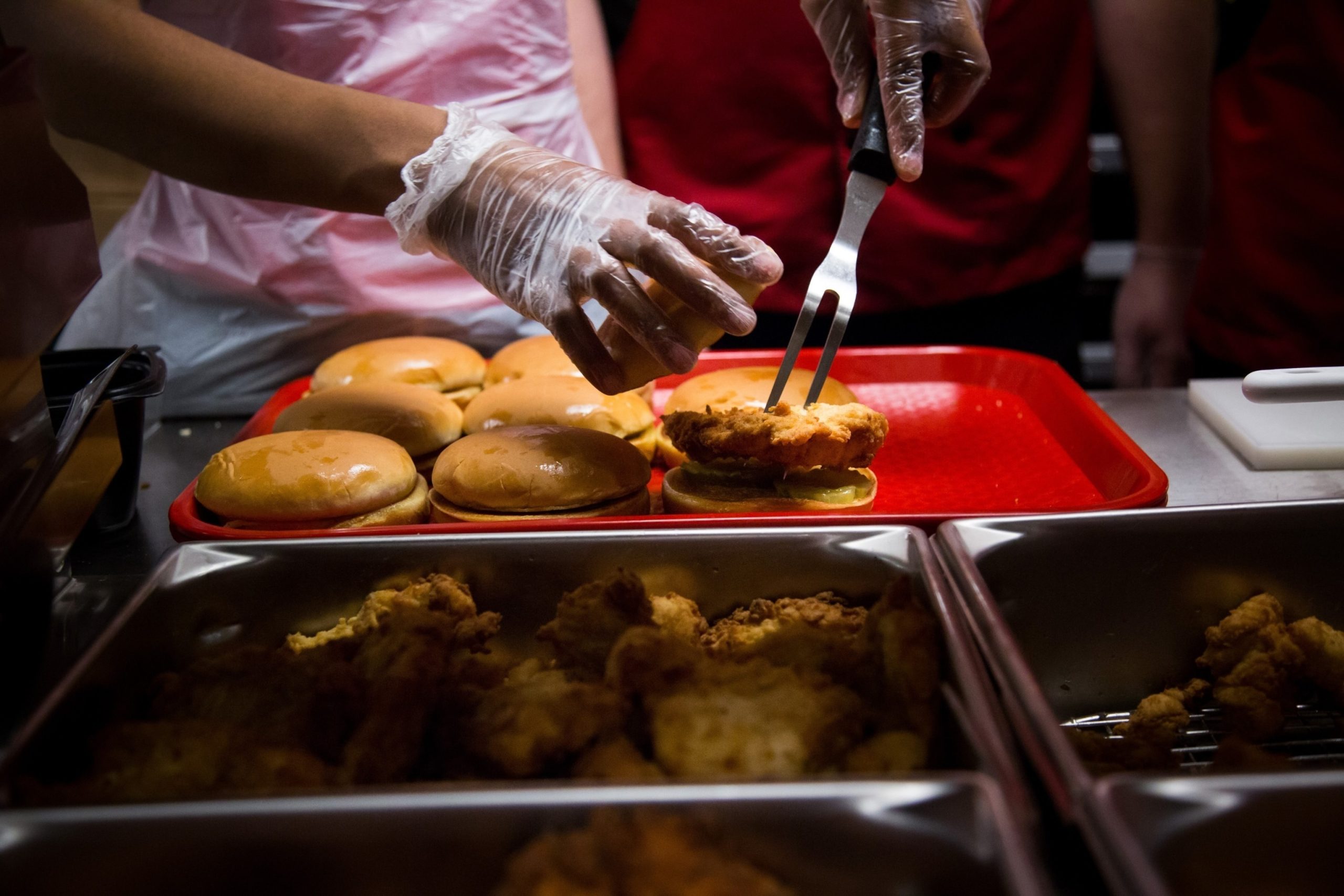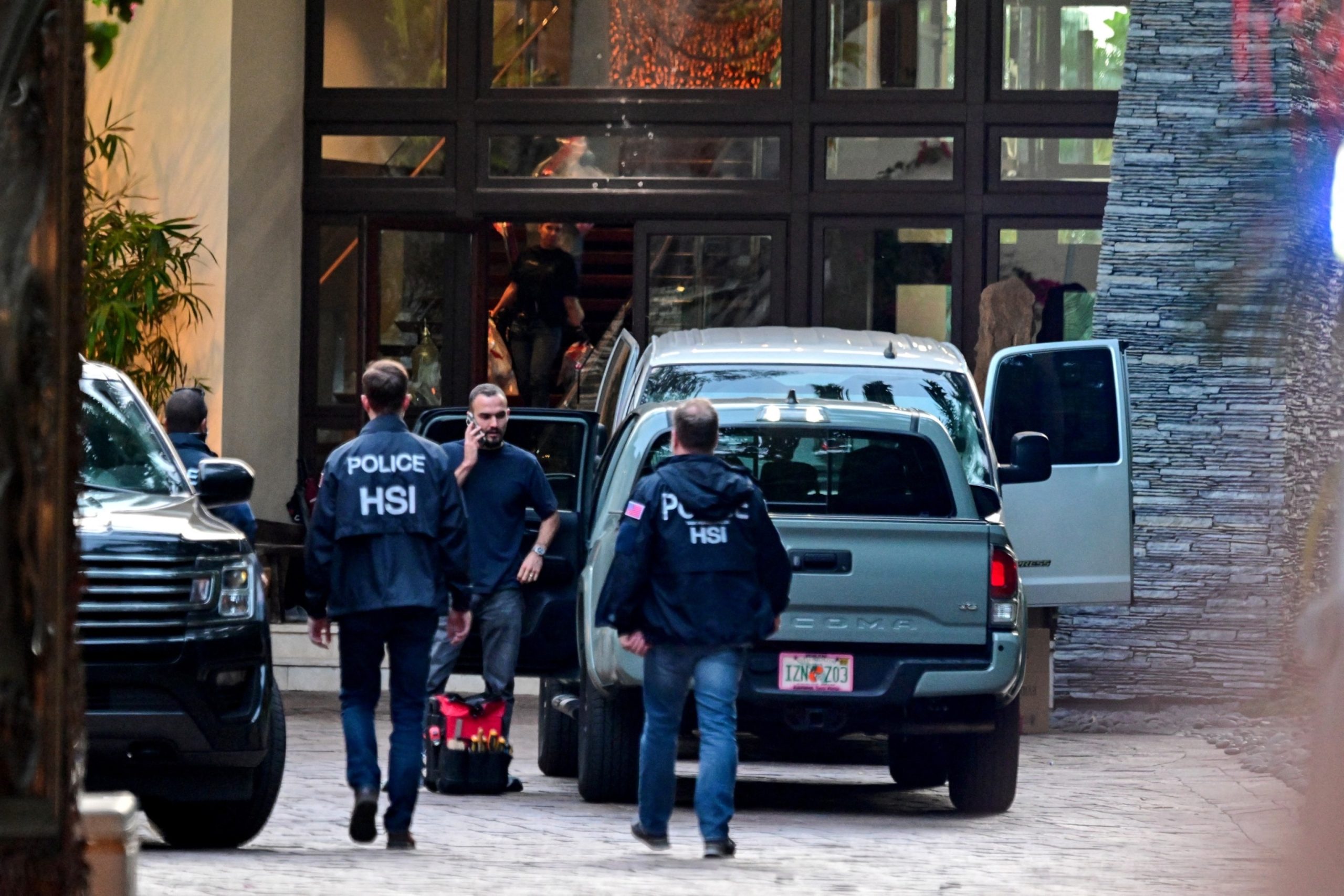Chick-fil-A is updating its commitment to customers about the quality and standards of its staple ingredient — chicken.
The fast food chain announced on its website that while “serving quality food has always been our priority,” effective this spring, the restaurant will “shift from No Antibiotics Ever (NAE) to No Antibiotics Important To Human Medicine (NAIHM).”
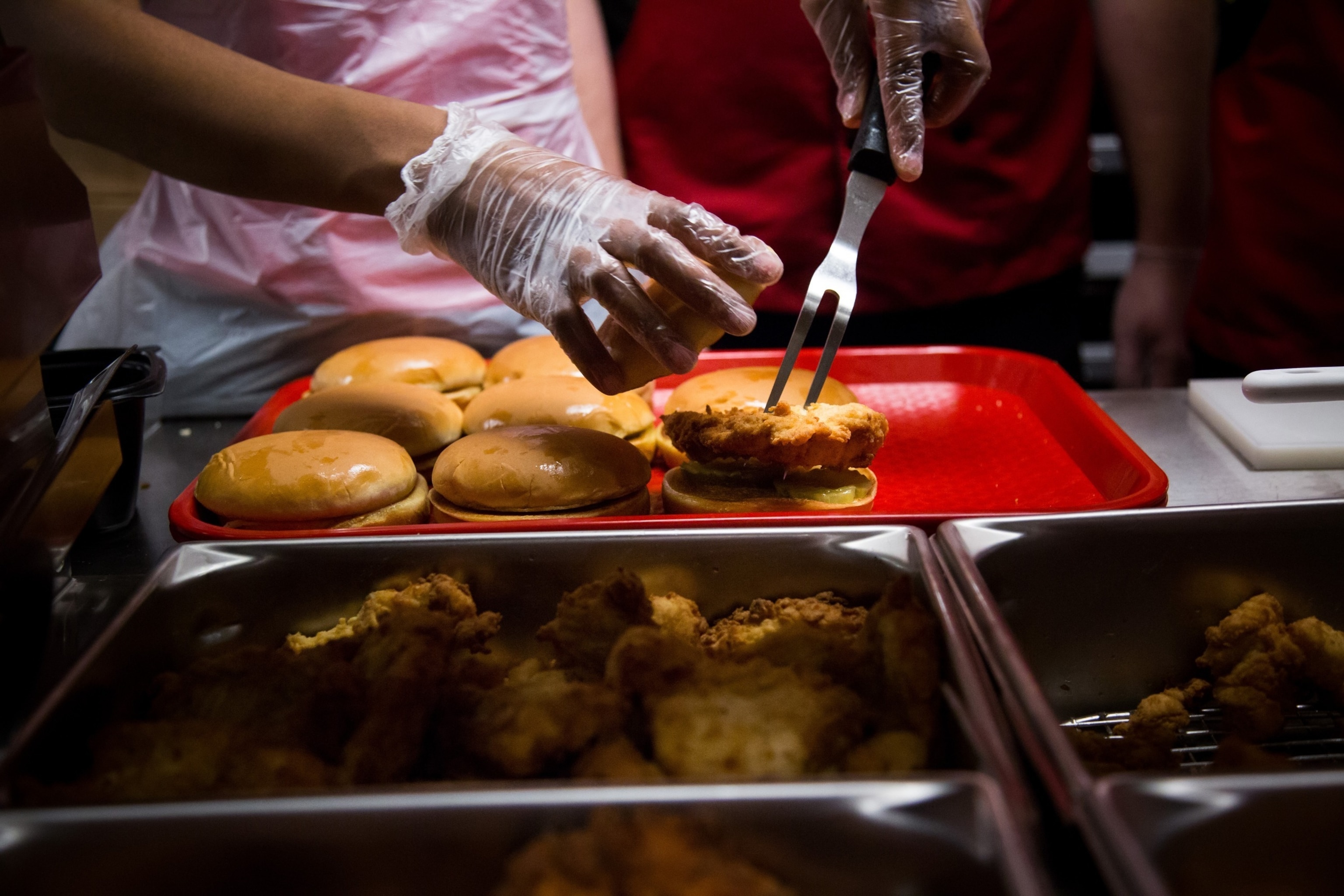
Employees prepare fried chicken sandwiches for guests during an event ahead of the grand opening for a Chick-fil-A restaurant in New York, Oct. 2, 2015.
Michael Nagle/Getty Images
The key distinction between NAE and NAIHM, as outlined by Chick-fil-A, is that the first “means no antibiotics of any kind were used in raising the animal,” while “NAIHM restricts the use of those antibiotics that are important to human medicine and commonly used to treat people, and allows use of animal antibiotics only if the animal and those around it were to become sick.”
In the announcement, Chick-fil-A reiterated its dedication to high-quality chicken is rooted in three components: selectivity, high animal wellbeing standards, and evolving the brand’s approach.
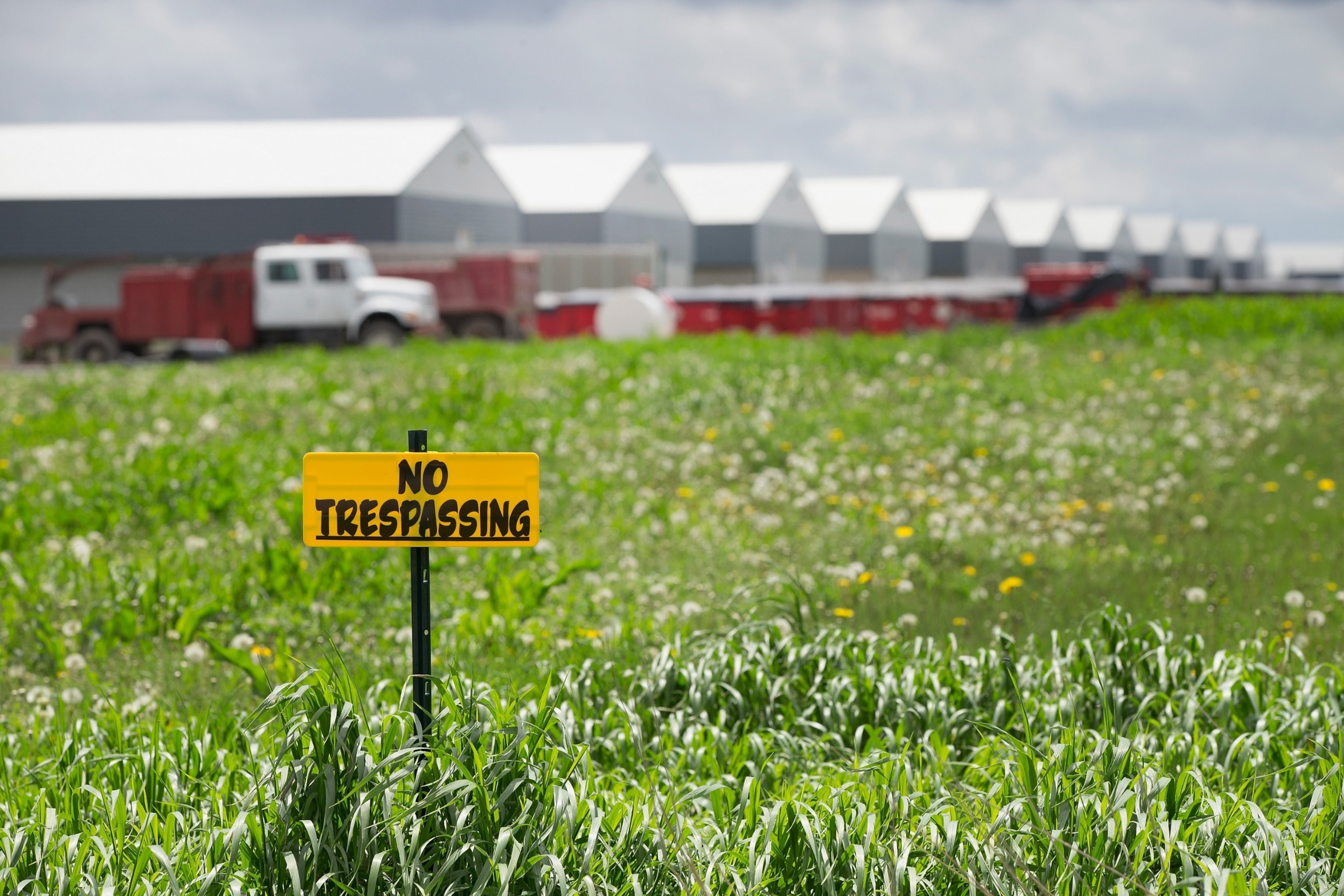
In a file photo, no trespassing signs are posted at a farm operated by Daybreak Foods, reported to have been hit with a highly pathogenic strain of avian influenza, near eagle Grove, IA, May 17, 2015.
Scott Olson/Getty Images
On the first point, the restaurant laid out that it only serves “real, white breast meat with no added fillers, artificial preservatives, steroids — and no added hormones.”
“We established an Animal Wellbeing Council of outside experts, which provides feedback on our policies and practices,” the update stated. “With their input, we are constantly evaluating our approach to animal wellbeing to ensure it is consistent with or exceeds industry standards.”
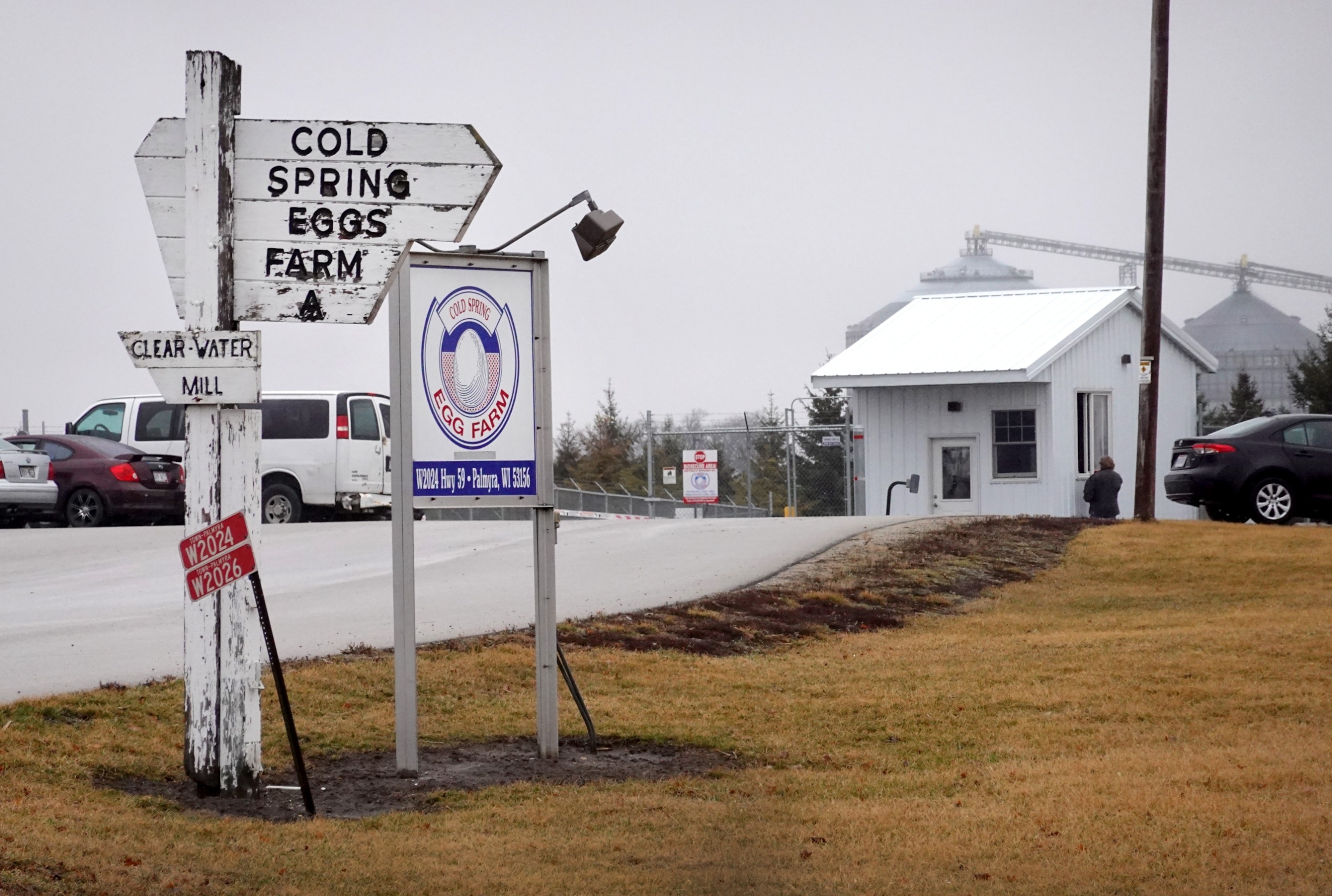
A sign sits at the entrance to the Cold Springs Eggs Farm where the presence of avian influenza was reported to be discovered, forcing the commercial egg producer to destroy nearly 3 million chickens, Palmyra, WA, March 24, 2022.
Scott Olson/Getty Images
Chick-fil-A first set a goal in 2014 to sell antibiotic-free chicken at its restaurants within five years and committed to sourcing only cage-free eggs for its breakfast menu items by 2026.
With increasing outbreaks at U.S. chicken farms of Highly Pathogenic Avian Influenza (HPAI), commonly referred to as bird flu, chicken supplies have dwindled prompting an uptick in prices.
A representative for Chick-fil-A did not immediately respond to ABC News’ request for additional comment.
Chick-fil-A, the popular fast-food chain known for its chicken sandwiches, recently made headlines when it announced that it would be reversing its decision to serve only antibiotic-free chicken. The company cited anticipated supply challenges as the reason for this change in policy.
In 2014, Chick-fil-A made a commitment to serve only chicken raised without antibiotics by the end of 2019. This decision was praised by many consumers and health advocates who are concerned about the overuse of antibiotics in livestock production and its potential impact on human health.
However, as the deadline approached, Chick-fil-A realized that meeting this goal would be more difficult than anticipated. The company cited challenges in sourcing a steady supply of antibiotic-free chicken that meets its quality standards and price requirements.
In a statement, Chick-fil-A explained that while they remain committed to reducing the use of antibiotics in their chicken supply chain, they have decided to take a more phased approach to achieve this goal. The company plans to continue working with its suppliers to find solutions that balance their commitment to food safety and animal welfare with the realities of the marketplace.
This decision has sparked mixed reactions from consumers and health advocates. Some have expressed disappointment that Chick-fil-A is backing away from its commitment to antibiotic-free chicken, while others understand the challenges that the company is facing in sourcing a steady supply of this type of chicken.
It is important to note that Chick-fil-A is not alone in facing these challenges. Many other restaurants and food companies have also struggled to source antibiotic-free chicken in recent years, as consumer demand for this product has increased.
In the meantime, Chick-fil-A has stated that it will continue to work towards its goal of reducing the use of antibiotics in its chicken supply chain. The company remains committed to providing high-quality, safe, and delicious food to its customers, and will continue to explore ways to achieve this goal while also ensuring a reliable supply of chicken for its restaurants.
Overall, Chick-fil-A’s decision to reverse its policy on antibiotic-free chicken highlights the complex challenges that food companies face in meeting consumer demands for sustainable and ethically sourced products. It also underscores the importance of transparency and communication with customers when navigating these issues.
